
- The Shimanami Kaido begins on Honshu in Onomichi City.
- across the six islands of Mukaishima Ikuchijima, Omishima, Hakatajima
- and Oshimbegins on Honshu in Onomich on Honshu in Onomichi City
Despite being the largest of the islands on the Shimanami Kaido, the Omishima section of the route is a mere 5km and is far from the best of what the island has to offer.
The 45km ‘Island Explorer’ loop of the entire island is a perfect cyclist's route. The roads are good and the views spectacular. It is by no means flat, but most of the hills are long and rolling rather than the sudden 10% gradient climbs that the Japanese countryside likes to throw at you. The southern coast is particularly stunning with the road carrying you above citrus orchards and offering views out across the glistening water. As you move east to west you have views of the arched Omishima Bridge, the Hakata-Oshima Bridge, Tsushima Island, and, on a clear day, you can see the as the Kurushima Kaikyo Bridge stretching across to Imabari on Shikoku and the little islands that dot the Kurushima Straits. With little traffic to contend with, it is a road cyclist's dream.
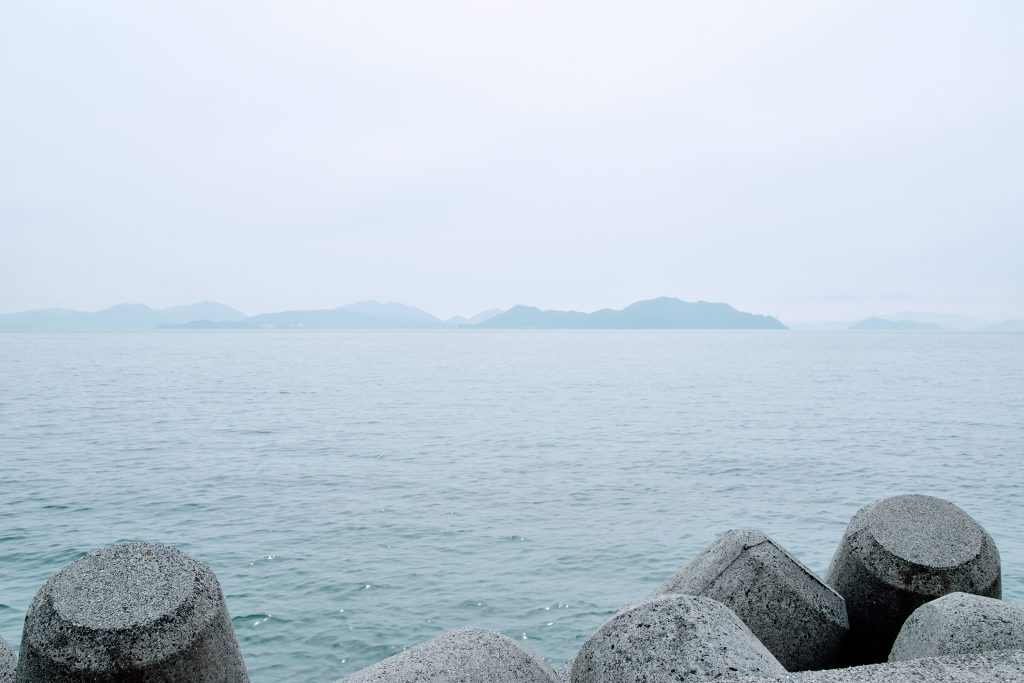
If a full loop is beyond you, don’t worry. With one of Japan's most important shrines and the nation's most outstanding collection of samurai armor and weaponry on display in the center of the island, several art museums and a growing number of roadside cafes, there are also ample opportunities for pottering and plenty to keep the beginner cyclist motivated.
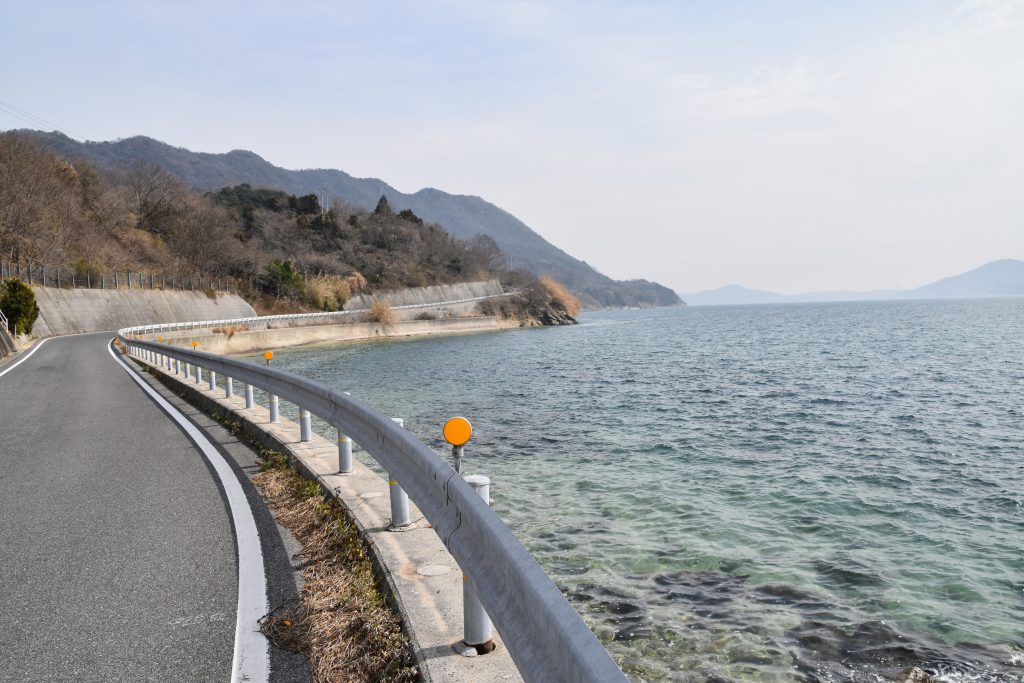
Oyamazumi Shrine is located in the shadow of the 437m high rocky peak of Mt Washigatozan. The remote location of the shrine makes it somewhat hard to fathom that it was, for centuries, one of Japan’s most important shrines. The grand scale of the shrine and two gnarled, twisted and revered camphor trees, one said to be 3000 years old and the other 2600, within the grounds make you realise that you have stumbled upon somewhere quite special.
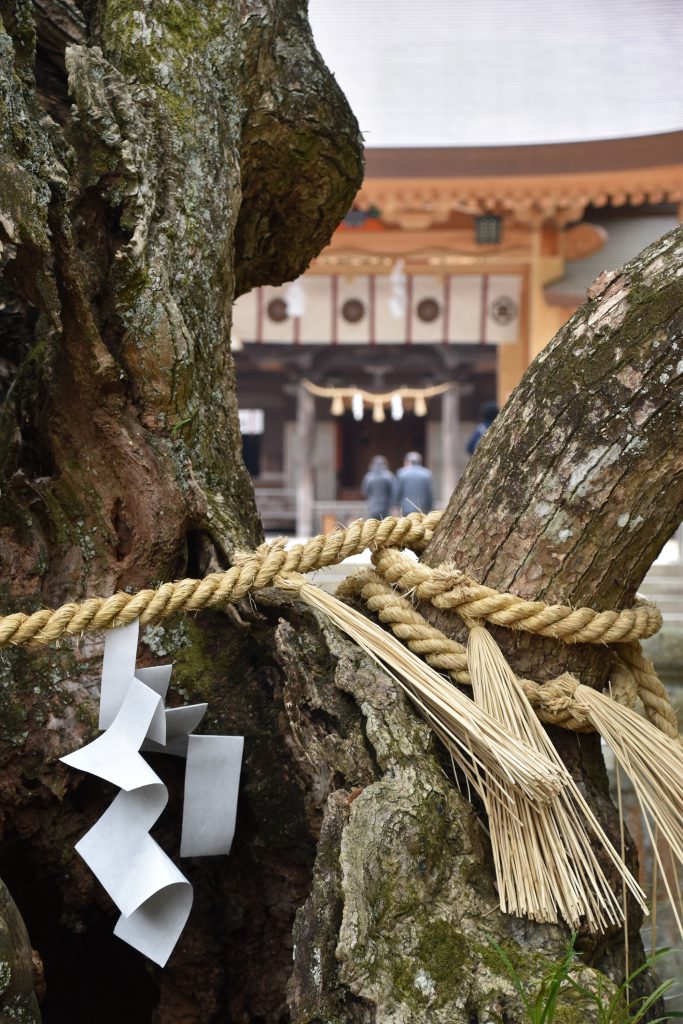
Oyamazumi was, in fact, especially relevant to samurai commanders who would visit the shrine to pray for success in battle. The victorious would return and make offerings of their weapons and armor to the shrine. Thanks to these offerings Oyamazumi now hosts a quite astounding collection of samurai armor and swords, a collection which holds some 80% of all Japan’s military artifacts designated as cultural and national treasures. Although the the names of items are written in roman script, the more detailed explanations about the displays are only in Japanese. This is unfortunate as you need a fairly good knowledge of Japanese samurai history to really appreciate just how special the collection is. That said, even for the uninitiated, it is well worth the ¥1000 admission fee.
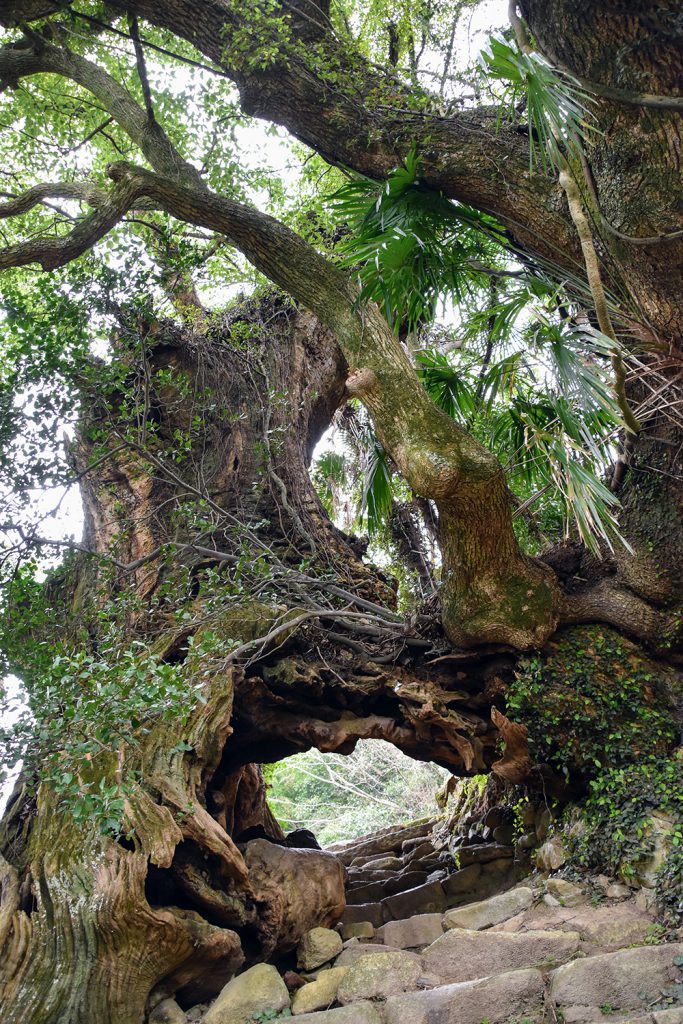
One diminutive set of armor is said to have belonged to Tsuruhime, sometimes described as Japan’s Joan of Arc. Tsuruhime, the daughter of Oyamazumi’s head priest, lived during the warring states period in the 16th century. After her the deaths of her brothers and father, she successfully defended Oyamzumi shrine against a clan looking to extend their influence.
The story of the Tsuruhime is the theme of a pleasant flower park a short walk from the shrine.
Rental bicycles can be picked up and dropped off at the Omishima Rental Cycle Terminal (Shimanaminoeki Mishima) next to Oyamazumi Shrine and at Kamiura Rental Cycle Terminal in Tatara Shimanami Park near the on off ramp to the Tatara Bridge on the Shimanami Kaido (7km from Oyamazumi Shrine). Ferries that run between Tadanoumi on Honshu and Sakari Port call ‘Rabbit Island’ Okunoshima.
Oyamazumi Shrine [大山祇神社]
The Treasure Hall may be the main reason many people visit Oyamazumi, but the shrine’s grounds themselves are well worth exploring. They contain around 200 camphor trees, but two in particular are awesomely old. One dates back 3,000 years, and the other 2,600 years. Follow the path to the Oku-no-in behind the main shrine and walk through another elderly and gnarled tree.
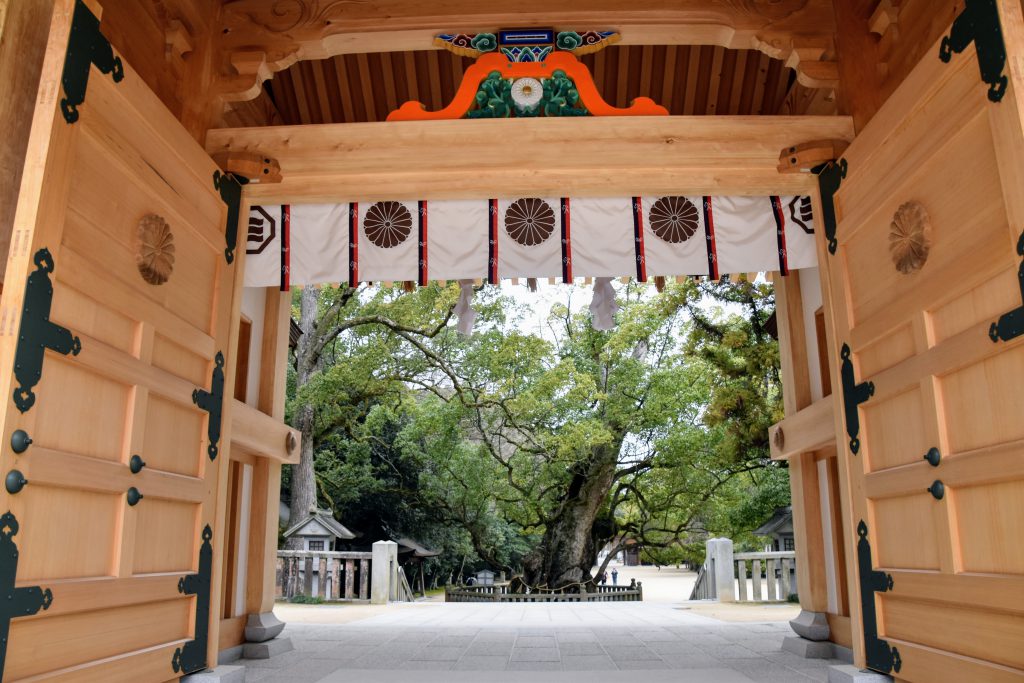
Oyamazumi Shrine Treasure Hall [大山祇神社宝物館]
It’s hard to believe that such an outstanding and significant collection of samurai weaponry and armor is here in this rural backwater far from hat are now considered Japan’s centers of history and culture. History buffs will hardly be able conceal their excitement as they imagine the people and events these exhibits witnessed. The Maritime Museum next door has a bizarrely random collection of natural exhibits.
Art & Architecture Museums [今治建築ミュージアム]
Omishima is home to several delightfully unexpected modern art museums and exhibits. The Ken Iwata Mother and Child Museum is an intriguing sculpture exhibit inside a open-air circular room. The Toyo Ito Museum of Architecture introduces the work of this renowned architect. Designed by the same architect is the nearby hillside Tokoro Museum which blends contemporary art, architecture and natural landscapes.
今治市伊藤豊雄建築ミュージアム
http://www.tima-imabari.jp/en/
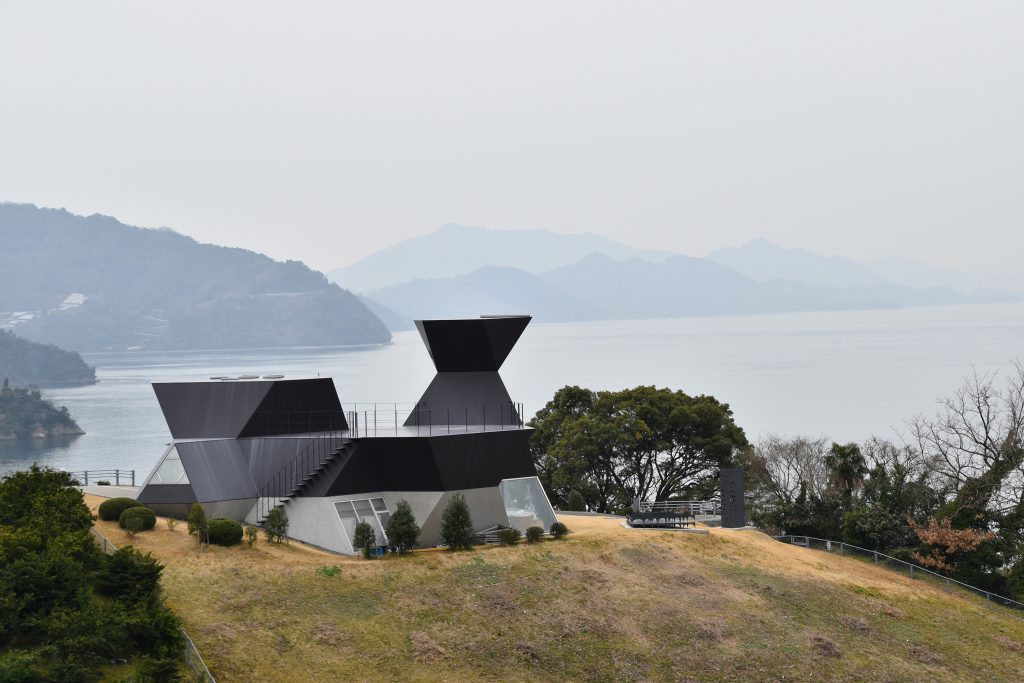
Tatara Shimanami Park [道の駅 多々羅しまなみ公園]
This is one of the most complete “Cycle Oasis” rest stops on the Shimanami Kaido and has great views of the Tatara Bridge and green lawns on which it’s great to relax on warm, sunny days. The humorous bike stands will also bring a smile to the face of even the most tired cyclist. There is a rental bicycle station here as well as a seafood heavy restaurant.
http://www.imabari-shimanami.jp/English-shimanami/English-no6.html
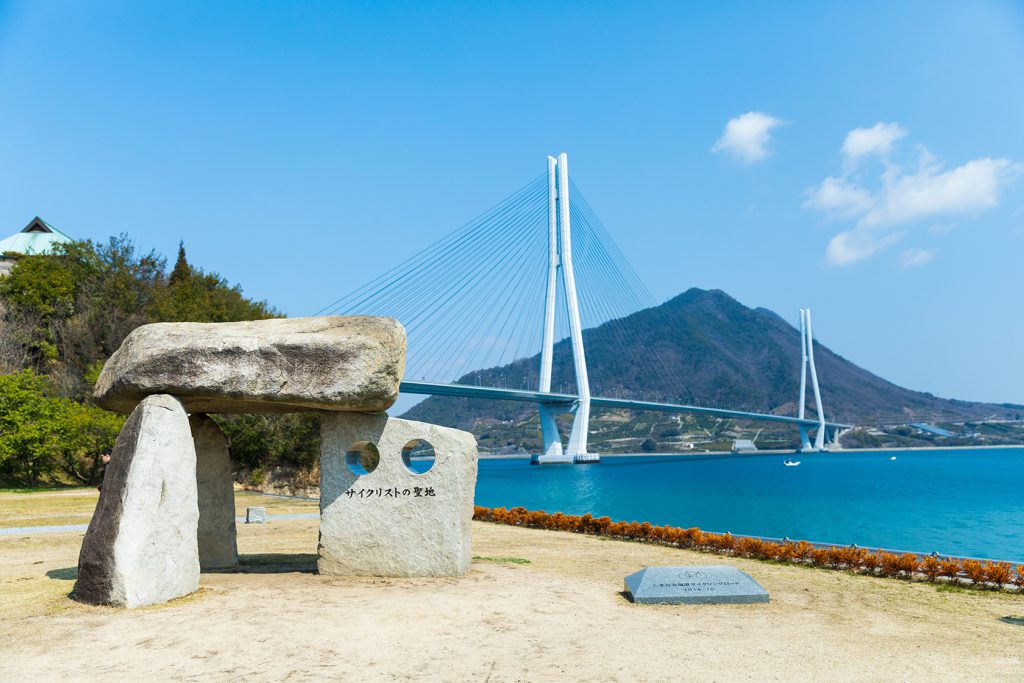
Irihi Falls [入日の滝]
The 15m Irihi waterfall is tucked away at the end of a narrow road about 1.5km off Route 51 on the west side of Omishima at the bottom of the southern side of Mt Washigatozan. The final approach is quite steep and the falls are behind Takiyama Temple. They are said to be particularly pretty in the evening golden hour.
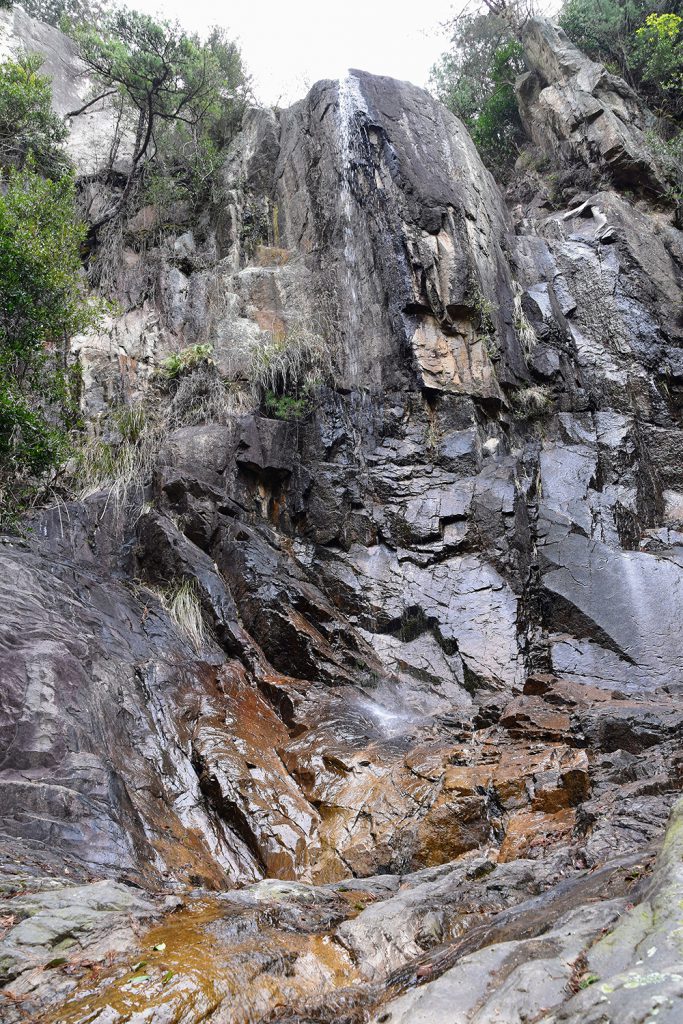
- The Shimanami Kaido begins on Honshu in Onomichi City.
- across the six islands of Mukaishima Ikuchijima, Omishima, Hakatajima
- and Oshimbegins on Honshu in Onomich on Honshu in Onomichi City


